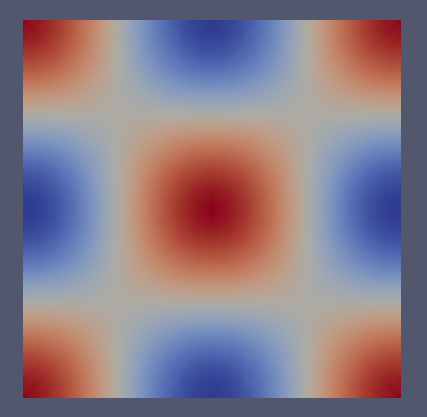
Figure 4.1: Helmholtz solution
Now that the simulation has been completed, we need to post-process the file in order to visualise the results. In order to do so, we can use the built-in post-processing routines within Nektar++. In particular, we can use the following command
$NEKTUTORIAL directory convert the .xml and .chk files into a .vtu format by
calling
$NEK/FieldConvert Helm_mesh.xml Helm_conditions.xml Helm_mesh.fld
Helm_mesh.vtu
.vtu file that is a readable format for the open-source package Paraview or
VisIt. Note that we typically have to specify both the mesh .xml file and the condition .xml
file. We can now open the .vtu file just generated. This produces the image in Fig. (4.1).